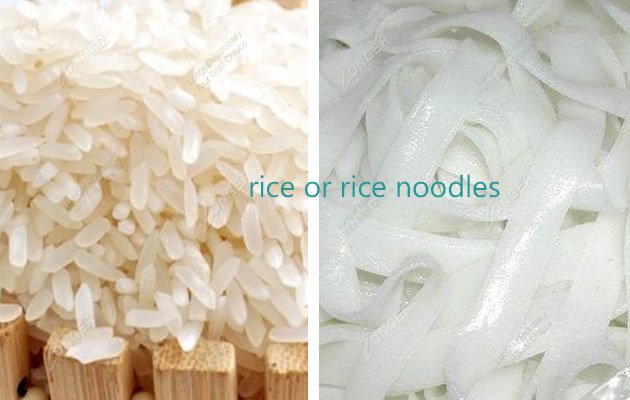Is Rice or Rice Noodles Healthier?
2019-07-15
Is rice or rice noodles healthier? Rice is the main raw materials of rice noodles, so their constituent elements are the same, so they are equally healthy.
Although the nutrients contained in rice are not very high, because people eat a large amount, it also has a high nutritional effect, which is the basic food to supplement nutrients, and rice noodles are the same.

1. Oryzanol
Oryzanol, known as "beauty factor", is an inhibitor of melanin with mild properties and no side effects. In the meantime, still can reduce capillary brittleness, raise the action of circulatory function of skin terminal hemal, improve skin colour and lustre thereby.
2. Starch
Rice contains about 70 percent starch, cellulose and hemicellulose, and soluble sugar. Indica rice and japonica rice contain a lot of amylopectin, which is easily soluble in water and can be completely hydrolyzed by amylase and converted into maltose. Glutinous rice contains less amylopectin, so only 54 percent can be hydrolyzed by amylase, so it is not easily digested by the human body.
3. Protein
The production price of rice protein is similar to that of soybean, the amino acid composition ratio is reasonable, and it is close to the optimal amino acid ratio mode of protein determined by the world health organization. The digestibility of rice protein is more than 90%, so the nutritional value of rice protein is high.
4. Vitamins and inorganic salts
It is also rich in vitamin B1 and inorganic salts such as calcium, phosphorus and iron. Japonica rice has higher phosphorus content and lower calcium content than glutinous rice. It is worth pointing out that brown rice also plays an important role in maintaining blood glucose balance because of its high dietary fiber, B vitamins and vitamin E.
To sum up, both rice and rice noodles are healthy.
Although the nutrients contained in rice are not very high, because people eat a large amount, it also has a high nutritional effect, which is the basic food to supplement nutrients, and rice noodles are the same.

1. Oryzanol
Oryzanol, known as "beauty factor", is an inhibitor of melanin with mild properties and no side effects. In the meantime, still can reduce capillary brittleness, raise the action of circulatory function of skin terminal hemal, improve skin colour and lustre thereby.
2. Starch
Rice contains about 70 percent starch, cellulose and hemicellulose, and soluble sugar. Indica rice and japonica rice contain a lot of amylopectin, which is easily soluble in water and can be completely hydrolyzed by amylase and converted into maltose. Glutinous rice contains less amylopectin, so only 54 percent can be hydrolyzed by amylase, so it is not easily digested by the human body.
3. Protein
The production price of rice protein is similar to that of soybean, the amino acid composition ratio is reasonable, and it is close to the optimal amino acid ratio mode of protein determined by the world health organization. The digestibility of rice protein is more than 90%, so the nutritional value of rice protein is high.
4. Vitamins and inorganic salts
It is also rich in vitamin B1 and inorganic salts such as calcium, phosphorus and iron. Japonica rice has higher phosphorus content and lower calcium content than glutinous rice. It is worth pointing out that brown rice also plays an important role in maintaining blood glucose balance because of its high dietary fiber, B vitamins and vitamin E.
To sum up, both rice and rice noodles are healthy.



 Message
Message